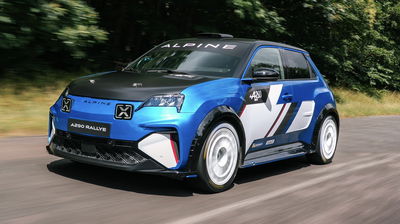Opel Commodore GS/E - The German Muscle-ish Car #blogpost
Commodore? Does that ring a bell? I guess so. Nowadays the name Commodore is reserved for cars that have thousands of dollars spent under the bonnet just so that they could do a burnout as big as possible. However, that wasn’t always the case.

Commodore? Does that ring a bell? I guess so. Nowadays the name Commodore is reserved for cars that have thousands of dollars spent under the bonnet just so that they could do a burnout as big as possible. However, that wasn’t always the case. The first-generation Holden Commodore actually is equivalent to the third-generation Opel Commodore.
The car this post is about is the Opel Commodore A, more specifically the GS/E version.
The base model

The Opel Commodore A was introduced in 1966 as a performance version of the Opel Rekord C. Both were mid-size executive cars, with the Commodore only being available as sedan or coupé with six-cylinder engines. The Rekord still received four-cylinder engines and had a number of different body variants to choose from.
All engines for the Commodore were SOHC straight-six engines ranging from 2.2 to 2.8 litres. All but one engine options had single-barrel (2.2) or double-barrel (2.5; 2.8) downdraught carburettor. As you may have guessed, the 1970 GS/E version didn’t rely on carburettors.
So, what makes it special?

Opels didn’t quite have the reputation of building cars that were really quick, or exciting by any means. Did they ever have? Anyway, the Opel executive committee had one simple solution. They simply said “We want to drive on the left lane again”, and born was the Commodore GS/E.
The carburettors were thrown out in favour of a Bosch D-Jetronic. The Bosch D-Jetronic was a very early version of a multi-point EFI, the “D” stood for “drucksensorgesteuert” (pressure sensor regulated). It differed from the older Kugelfischer mechanical injection by also taking the pressure inside the intake manifold into account. Logically, the most important part in the D-Jetronic is the MAP-sensor (manifold absolute pressure), a part that’s commonly found in any modern car.
Bosch sold the patent to several Japanese companies that continue to produce injection systems based off the D-Jetronic.
Performance gains

Such a very modern fuel injection must have a considerable performance gain, doesn’t it? The D-Jetronic was installed onto the 2.5 litre engine and without any modifications done to the engine, the power was instantly upped by 20 bhp, making it more powerful than the larger 2.8 litre engine. The fuel injected engine, named 2500 E, now pushed 150 bhp at 5800 rpm and 196 Nm at 4500 rpm with an unchanged compression ratio of 9.5:1.
The official advert for the car from 1970:
150 bhp at your right foot ... power to kick you ahead. Acceleration that pushes you into the seats. Six cylinders that receive their fuel served electonically. An engine that doesn't let a single octane go waste. GS/E: a lurking grumble in the two exhaust tubes.
150 bhp don’t sound alot today, but to put it into perspective, you need to see what other sports cars had under the bonnet. The Porsche 911 was 10 bhp weaker - and twice as expensive. 0-100 km/h was achieved in 9.5 seconds, a similar value as a contemporary Porsche 911. The top speed of 192 km/h was just shy of the magical 200 mark.
Well, calling it a true muscle car would perhaps upset a number of people, hence the title. The engine after all was lacking two cylinders to consider it a muscle car after all. But it’s one of the closest to a true American muscle car Opel ever sold - dirt cheap chassis and body from the high-volume production, a more powerful engine, some go-faster stripes and the performance to back it up. And, most importantly, the ability to outrun sports cars for a fraction of the price. Opel actually did sell a couple of cars with the General Motors smallblock V8 (Kapitän, Admiral, Diplomat), but these were luxury barges and way too expensive to be considered muscle cars.
So that’s pretty much it. A performance car that gives sports car a run for its money. Dear Opel, please do that again.














Comments
My neighbor had one, i “helped” him restore it before he left for germany and sold the car there
I wish there was a RWD Opel again :(
We all do. We all..
Man, thats cool!
Old school Opels are awesome!
This car came to Brazil named Chevrolet Opala with a few modifications in the front and is a very famous car for colectors. Here one example:
They should have come with a v8, but still great a car
So a small Chevy Nova?
Opala meeting in Brazil! :)
I’d call it a muscle car, if a Buick Grand National can be a muscle car, so can this
We had the Manta, the Speedster, now we have an Astra.
Where did it all go?
There’s roughly 15 rekord c / commodore a’s left in the uk. This is one of two I have.
The magical 200 isnt kmh its mph
We are talking about the late sixties here. 200 km/h top speed in a road car was a bold call. Even the Chevy Camaro with a 350 four-barrel under the bonnet (and admittedly a shorter gearing) topped out just shy of 200 km/h.
Pagination